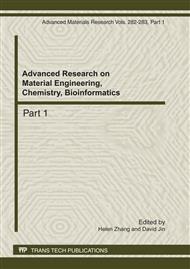p.104
p.108
p.112
p.116
p.120
p.124
p.129
p.133
p.138
Seismic Reliability Analysis of Hydraulic Aqueduct with Maximum Entropy Method
Abstract:
With the thin-wall dynamic analytical model of aqueduct for fluid-structure coupling, the seismic reliability of aqueduct is studied. In this model the influence of the bend-torsion coupling, water-structure coupling and nonlinear rubber bearing isolation are all taken into consideration. Based on the type of site soil, the artificial seismic waves are created. In accordance with the maximum entropy principle and the measured data of structural internal force under earthquake, the reliability distribution function and the aqueduct reliability are calculated.
Info:
Periodical:
Pages:
120-123
Citation:
Online since:
July 2011
Authors:
Price:
Сopyright:
© 2011 Trans Tech Publications Ltd. All Rights Reserved
Share:
Citation:


